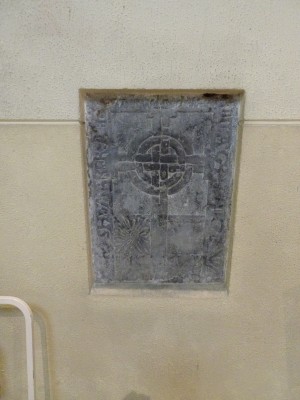GA-STNL-0390
Record Date:
21 January 2025
Graveyard:
Exact wording of epitaph:
- - - [ON MORA]FORD SHVMAKER AND [H]IS WIF IVA INLA GHLINGE WH[0] [DIED 1577]
People commemorated:
Surname:
MORAFORD and LAGHLINGE
Notes:
The slab (roughly trapezoidal in shape) is broken and now set into the West wall of the Lynch Aisle. It was originally recumbent. The Ins. around the border is in low false relief and incomplete. There are lozenge-shaped stops at various intervals around the Ins. The slab is decorated with a Celtic-style ringed cross, consisting of double-interlaced bands. On either side of the broad shaft of the cross there is a square panel of floral decoration set diagonally to each other. The segments outside these floral panels are plain. The pattern was probably continued further down the length of the stone.



